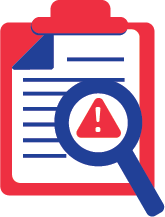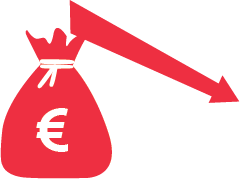Five Reasons To Start Measuring Supply Chains Emissions in 2022
The most complicated aspect of calculating value chain emissions is the data collection process itself. A wide variety of stakeholders, different methodologies and reporting standards, and a lack of trusted and reliable data sources can be considered major obstacles and reasons
At least one fifth of the world's largest public companies have committed to meeting net zero emissions. These commitments are mostly focused on the Greenhouse Gas (GHG) Protocol's Scope 1 and Scope 2 emissions, occurring from sources that are controlled or owned by an organization or associated with the purchase of energy. However, for many companies, Scope 3, also called 'value chain emissions', accounts for up to 90% of total emissions and is often in a hard-to-tackle category.
The most complicated aspect in calculating value chain emissions is the data collection process itself. A wide vatiety of stakeholders, different methodologies and reporting standards, a lack of trusted and reliable data sources can be considered as major obstacles and reasons to postpone the assessment of this segment of business. But we at Marine Digital strongly believe that it is better to start measuring supply chain emissions in 2022, and here's why.
The most complicated aspect in calculating value chain emissions is the data collection process itself. A wide vatiety of stakeholders, different methodologies and reporting standards, a lack of trusted and reliable data sources can be considered as major obstacles and reasons to postpone the assessment of this segment of business. But we at Marine Digital strongly believe that it is better to start measuring supply chain emissions in 2022, and here's why.
Overlooking supply chain emissions, companies fail to manage their entire negative impact and environmental risks. The consequences of this for business will be higher financial costs in the short run and legal penalties in the – not so– long run as regulators are pushing companies toward transparency on climate standards and tightening the screws on sustainability reporting.
Facing the truth of their actual environmental impact, companies can overcome the upcoming business challenges by investing in transitioning to sustainable business models beforehand.
Facing the truth of their actual environmental impact, companies can overcome the upcoming business challenges by investing in transitioning to sustainable business models beforehand.
To build credible sustainability business strategy
The data gap in supply chains emissions-tracking leads to a low carbon visibility across the value chain. It means that a company can get ESG analysis and reporting that is insufficient and incomplete for valuation of the risks and benefits for companies pledging to net-zero and for complex fact-based decisions to achieve the ESG goals.
More accurate and trusted data on emissions is an urgent need, both for compliance purposes, e.g. to meet requirements of the Supply Chain Due Diligence Act in Germany, but also so companies can have a credible plan to get to net-zero.
Ivan Ladan, CEO Marine Digital: "For the last two years we have seen a growing interest in managing GHG emissions in maritime supply chains from our clients and their customers. By analyzing and monitoring carbon footprint, we help organizations identify potentials for decarbonisation and financial savings in transportation and logistics. It is crucial to note that this data and CO2 analytics allow companies to pinpoint areas to dive deeper to make meaningful change in their supply chains and transform the business to more resilient and sustainable models".
To learn more about Marine Digital ESG Reporting & Analytics
More accurate and trusted data on emissions is an urgent need, both for compliance purposes, e.g. to meet requirements of the Supply Chain Due Diligence Act in Germany, but also so companies can have a credible plan to get to net-zero.
Ivan Ladan, CEO Marine Digital: "For the last two years we have seen a growing interest in managing GHG emissions in maritime supply chains from our clients and their customers. By analyzing and monitoring carbon footprint, we help organizations identify potentials for decarbonisation and financial savings in transportation and logistics. It is crucial to note that this data and CO2 analytics allow companies to pinpoint areas to dive deeper to make meaningful change in their supply chains and transform the business to more resilient and sustainable models".
To learn more about Marine Digital ESG Reporting & Analytics
To achieve net-zero emissions targets
Vague understanding of what the carbon footprint looks like now, and to what extent the supply chain makes up that footprint, can't help to make a step toward defining decarbonization plans and levers best suited for the business.
The decarbonization roadmaps should include changes across geographies, product lines, the supply chain, downstream in logistics, product use or end of life. To determine baselines and translate the net zero targets into business-specific parameters and plans operational leaders, sustainability strategists, CFOs and other stakeholders should understand a value chain-wide GHG footprint.
The decarbonization roadmaps should include changes across geographies, product lines, the supply chain, downstream in logistics, product use or end of life. To determine baselines and translate the net zero targets into business-specific parameters and plans operational leaders, sustainability strategists, CFOs and other stakeholders should understand a value chain-wide GHG footprint.
To establish a realistic decarbonization roadmap
Scope 3 is beyond the direct control of companies but still under their responsibility. Monitoring and managing carbon footprints across extended value chains, organizations can think about which players are impacting those levers and engage with them.
Improving sustainability is not only about rating suppliers with more sustainable practices. It's also about collaborating to make continuous enhancements, find efficiencies as well as develop meaningful commercial relationships with like-minded peers.
Improving sustainability is not only about rating suppliers with more sustainable practices. It's also about collaborating to make continuous enhancements, find efficiencies as well as develop meaningful commercial relationships with like-minded peers.
To find a source of potential commercial partnerships
2/3 clients are willing to spend money on products produced by impact-driven companies enclosing ESG performance in their business strategy and managing ESG risks. Vocalizing climate pledges and net-zero goals that lead to greenwashing only can have a boomerang effect by hitting companies' reputations in the long-term perspective.
Meanwhile, the positive ESG reputation during crisis periods, such as the global financial crisis or the COVID-19 pandemic, will spiral upwards, in a virtuous cycle, in post-crisis years.
Meanwhile, the positive ESG reputation during crisis periods, such as the global financial crisis or the COVID-19 pandemic, will spiral upwards, in a virtuous cycle, in post-crisis years.
To cultivate corporate sustainability reputation that matters

TOP 5 factors contributing to lower fuel costs for Shipping companies
Get a presentation with a full description of the features and free pilot project with trial of Marine Digital FOS for 2 months
"Clicking the button, you consent to the processing of personal data and agree to the privacy policy"

Get an overview "The Pathway to Zero Carbon Shipping:
IMO Compliance and CII Optimization through SEEMP" on email and download it for FREE! Leave your email now!
"Clicking the button, you consent to the processing of personal data and agree to the privacy policy, as well as consent to subscribe to the newsletter. "
Аdvantage of Fuel Optimization System from Marine Digital:

Marine Digital FOS can be integrated with other system and third-party's solutions through the API. To implement vessel performance monitoring for any vessel, we are using mathematical algorithms, machine learning and the same equipment as in FOS. The more data we collect from vessels, the more precise reports and recommendations our system will perform according to your individual requirements in fleet management.
If you have any questions about the solutions and the Marine Digital System platform, write to us, we will be happy to answer
If you have any questions about the solutions and the Marine Digital System platform, write to us, we will be happy to answer

Increased business process speed

Reducing to zero the number of errors

Best offer to the clients

Reduction in operating expenses
Have a questions?





